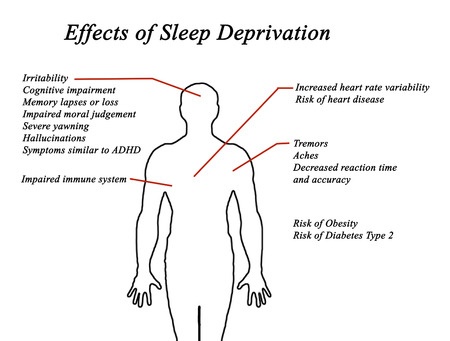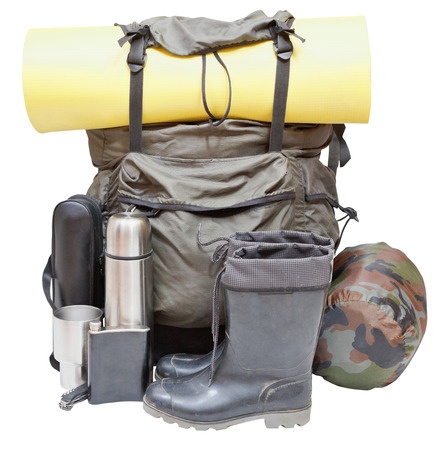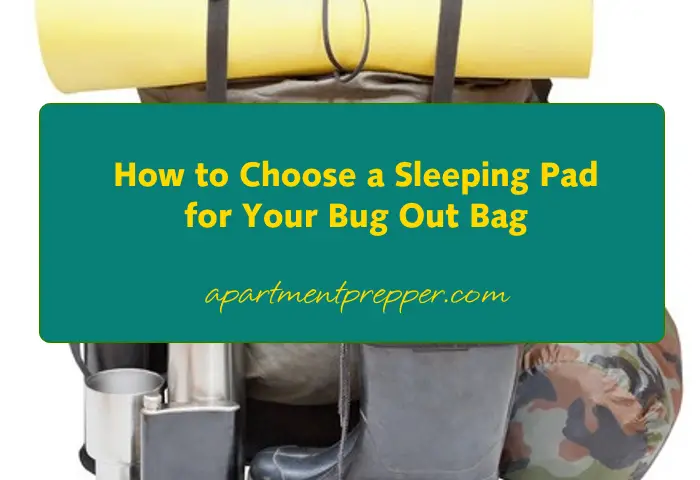Written by James
Wilma, Rita, Katrina, Dennis, Jeanne, Frances, Charley, Irene, Georges, Earl, Opal, Erin, Andrew, Floyd, Kate, Elena, David, Eloise, Agnes, Gladys, Inez, Alma, Betsy, Isbell, Dora, Cleo…
… JUST naming a few hurricanes that stormed their way through FLORIDA. We’re quickly running out of cute cat names to give them.

Our no.1 survival tool is our body.
OK, so we all know it’s a great feeling to get that new shiny scope for your magazine-fed semi or get one more serrated blade, all shiny and sexy. But a survival tool is only as efficient as the person handling it.
What good are the state-of-the-art scope and that well-balanced blade if you are have a fever and your hand is not steady?
Foods, water…sleep
There’s no lack of talk about what energy bars should be in your BOB, what water filtration systems are the best to have on hand…but what about sleep?
As studies clearly show, missing ONE NIGHT of proper sleep leads to major cognitive issues:
· Your reaction time and alertness suffer
· Your reflexes slow down
· You decision making and reasoning are hindered

Basically, your body is slowly shutting down and no energy bar can help. How good is that fancy new scope if a drowsy eye is looking through it?
Should your BOB include a sleeping pad?
This article is not about answering that question and, as with most of these, the answer is “it depends.” Are you bugging out and have a clear route to your shelter (where you have sleeping arrangements in place) or bugging out to the woods, away from your shelter?
This article is about choosing the best sleeping pad for your needs if your answer is YES.
Before we move on, let’s get our basics right – the three types of sleeping pads:
Foam mats
Dirt-simple and dirt-cheap, a foam pad is just a mat made of dense foam with closed air cells “injected” into it. They are light, cost next to nothing, practically indestructible and offer good insulation. On the other hand, they are thin and you’ll feel every bump underneath you and probably wake up to sore muscles and aching hips and shoulders. They can’t be deflated, you roll them up and tie them to the side of your backpack, so be prepared to ruin that perfectly crafted profile of your BOB. On their own, they can be a temporary solution for a night or two and are best used combined with an air pad or a self-inflating pad.
Self-inflating pads
Open the valve, sit back and let the magic happen. The technology was revolutionary when it hit the market a few years back. The way a self-inflating works is a combination of open-cell foam inside the pad and air. The foam in packs tightly when compressed but when the valve it opened it sucks the air in automatically.
They’re much more comfortable than foam mats but heavier.
The less sophisticated of these roll (much a like a foam mat) but the more advanced ones pack surprisingly small, about the size of a handball.
Air pads
Made of ultra-light materials, these are not the kind of pad you’d see people brining to the beach. The most comfortable option, thick (2-4 inches when inflated) the prices of these can get pretty steep.
Most of these make a squeaking noise as you turn in your sleep – not the best choice if your scenarios includes being silent and unnoticed. On the other hand – some of these are specially designed to be ultra-light while still keeping you off the ground and being almost as comfortable a regular high-rise air mattress.
These minimize the materials used and are basically constructed as a frame that supports all the right places. They can weigh as little as 9-10 ounces.
So, I’m confused, which of these should I go with?
It would be irresponsible to say, “go with X or Z.”
As with most things, it depends on your bug out scenario. Having said that, let me say that you goal here should be to cover as many of the possible scenarios while minimizing the weight you add to your backpack.
What’s in my backpack?
A combo of closed-cell foam mat attached to the side and a framed air pad that weighs 9.5 ounces and packs a bit larger that a fist.

This air of the pad provides comfort and that feeling on not being raised from the ground and the foam protects the air pad could otherwise be easily punctured and adds comfort. Total weight of the two: 1.31 pounds.
Is the added weight still an excuse to make your peace with sleeping on the ground?
More about weight and size
Most regular pads are about 20 inches wide and 70-72 inches long for size regular. As a rule of thumb, the pad should comfortably accommodate your shoulders. If you are a big guy, they come in extra long and extra wide versions and these are usually 77 inches long and 25-30 inches wide.
For women – you’ll rarely see that a pad is listed to be explicitly “for women”, so you’ll just have to know what to look for. Women tend to be cold sleepers and require more insulation at the hips and the legs. That’s why a semi-rectangular pad also known as mummy-shaped pad is the best choice.
Demystifying the R-value and temperature ratings
Let me be blunt – there’s too much fuss about R-values of a pad and it’s a common misconception that it is somehow measure of quality.
IT’S NOT.
The R in the R-value stands for Resistance to temperature changes, so it’s basically a measure of insulation. Some companies still use temperature rating instead of R-value, which is simpler and basically tells you what temperatures the pad is designed for.
For reference purposes here’s a comparison of the two:

Rule of thumb – the best pad for a prepper is what you would call a season pad with an R-value of 3.5-4.5, that’s the sweet spot.
Another issue with how people perceive the R-value is that it’s universal. That’s why people compare R-value across brands without giving it a second thought and end up wondering why pads with the same R-value from different brands feel different. The value itself is standard but there is no standard to how different companies measure the R-value and assign it to their products.
That’s another reason why, personally, I go with the established brands of air mattresses and pads that have stood the test of time and have a substantial number of user reviews to go on (like Coleman, Aerobed, Therm-a-rest, ALPS, Klymit…).
It’s a dirty little secret of the industry.
Let’s make it simple – generally speaking, the cutoff point between a winter-pad and a pad for the other three seasons is somewhere around 3.
Note – to calculate the R-value of what’s beneath you simply add them up. So, if you have a foam mat of 2 and a pad of 3, the total R-value is somewhere around 5. As we said, things can vary from brand to brand to brand and even from product to product, but it’s best to simplify the story and not to lose sleep over it.
Wrapping it up
The goal of a smart prepper is not look at others for definitive answers, but to educate himself and get better at making the right choices. If this guide was at all useful in helping you do that in regards to sleeping pads and your Bug Out Plan, it served its purpose.
Stay sharp and protect your own,
James
About the Author:
James is the editor-in-chief of 3Beds.com, a site focused on adventure stories, tips and reviews of air mattresses and sleeping pads. He’s a zealot for all things outdoors and an established authors in a number of online publications like TGO Magazine, Klymit blog and Gear X. As he says, his adventure days are behind him, but the days of talking and writing about the lessons he learned over the decades are just starting out.


2 comments